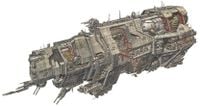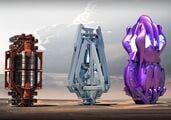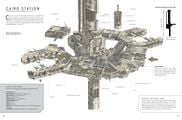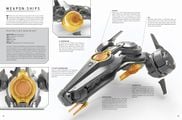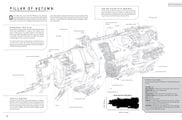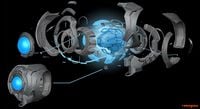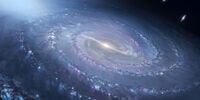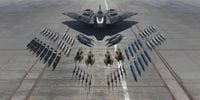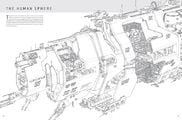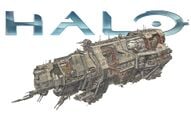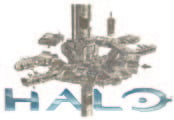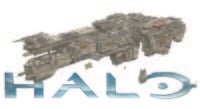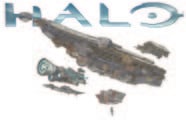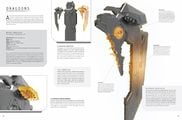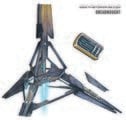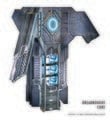Halo: Warfleet – An Illustrated Guide to the Spacecraft of Halo
From Halopedia, the Halo wiki
| Halo: Warfleet – An Illustrated Guide to the Spacecraft of Halo | |
|---|---|
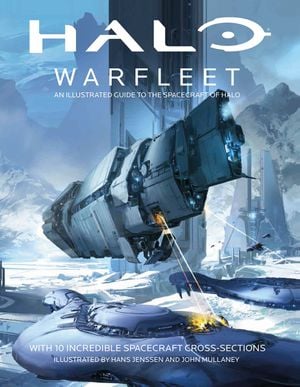
| |
|
Author(s): |
|
|
Cover artist(s): |
|
|
Illustrator(s): |
|
|
Publisher: |
|
|
Publication date: |
|
|
Media type: |
Print[1] |
|
Pages: |
96 pages[4] |
|
Dimensions: |
10 1/2" x 13 3/4"[4] |
|
Weight: |
1.7 pounds[5] |
|
ISBN: |
|
Halo: Warfleet – An Illustrated Guide to the Spacecraft of Halo is a reference book on the Halo universe that was released on September 5, 2017.[4] The book details the technology, scale, design, construction, and variety of ships, space stations, and colony worlds in the Halo universe.[1]
Official summary[edit]
| “ | From the developers of the Halo video game franchise comes an official guide to the spacecrafts of the Halo universe, featuring intricately detailed cross-section illustrations.
This is the official, authoritative guide to the spacecrafts of the Halo universe, written in collaboration with 343 Industries, the developers of the “Halo” franchise. The full-color illustrated package covers the fleets of the UNSC, Covenant, and the Forerunner factions, featuring intricately detailed cross-section illustrations of franchise favorites the Pillar of Autumn, High Charity, and the Forerunner Dreadnought. Other specialized spreads offer a closer look at the weapons used in space, the planets of the Covenant and Human colonies, and the space-faring technology that each utilize. With illustrations from the Halo team and renowned illustrator Isaac Hannaford, this is a must-have for fans of the Halo franchise. |
” |
Content[edit]
Described as a more "technical" counterpart to Halo Mythos, Halo: Warfleet features ten full-color cross-sections of ships by Hans Jenssen, known for his work on Star Wars: Incredible Cross-Sections, and John Mullaney, who previously worked on ship cross-sections based on the Firefly franchise. In addition, multiple all-new secondary art pieces by various artists are included. Written by 343 Industries' internal writing team, with Kenneth Peters serving as writing lead, Warfleet also includes a variety of specific technical details and terminology formerly contained to the Halo Story Bible.[1]
The book is divided into five sections: Introduction/Technical Architecture, Human Ships, Covenant Ships, Forerunner Ships, as well as an expansive Glossary. The book is published in an "oversized" format to accommodate the detail in the larger illustrations. Each spread includes annotations to explain the functions of given parts of a ship, along with statistics and history of the vehicle in question.[1]
Development[edit]
Halo: Warfleet was announced on the Halo website in an issue of the Halo Community Update on October 14, 2016.[6] On January 18, 2018, Jeff Easterling and Kenneth Peters promoted the book with a lore stream, discussing the book's development and providing more insight into some of the ships featured.[7]
John Mullaney explained that the development process for the book was different to other cutaway illustrations he had done as the various ships were already designed, and the internal sections for gameplay were also there, but the illustrators purpose was to ensure that these interiors were consistent with the aesthetic created.[8] Mullaney also noted that the project was a departure from his traditional work on other franchises such as Alien or Star Wars.[8] The illustration of the Forerunner Dreadnought was noted to be challenging, a massive ship that is both spindly and spikey based on the Forerunner design. As a result this limited the amount of the interior that could be shown. Mullaney noted that 343 were clear with how the internals should be and provided reference material to support the illustrator.[8] Conveying scale on the dreadnought was also achieved by doing a separate vignette of the capsules of the cylixes, that were of a scale comparable to that of a human, and is an elegant way of conveying human scale to the overall size of the dreadnought. Furthermore the sense of scale can be taken further as Mullaney explained that the Dreadnought rests at the city located at the top of the High Charity illustration, you come to appreciate the sense of size of the great city in comparison to the Forerunner vessel.[8] The illustrations created were a hybrid of traditional drawings and digital techniques. Glowing neon lights that adorned the alien vessels were achieved by adding bold vector lines to the pixels of the high resolution scans of the paintings. With both the Truth and Reconciliation and the Ardent Prayer, both vessels are adorned with an intricate but subtle hexagonal pattern. This was achieved by using Cinema 4D to create a delicate hexagonal mesh that wrapped around the hulls and and then composite the isolated render onto the scans of the paintings.[8]
343 steered the design process as they were aware that Mullaney was not familiar with the Halo universe, and also provided a detailed style guide for the Halo aesthetic. 3d models of ships and interior spaces were provided to the illustrators to assist them in creating the cutaways and assistance was provided by Carlos Naranjo at 343 and Paul Melvin at Maxon. 343 also supplied interior references to as to explain what sections of the vessel would be revealed by the cutaway areas. The size of the ship also played a part in the cutaways decided upon, as with Ardent Prayer, the small size of the ship meant it the cutaways were already decided beforehand.[8] For the Truth and Reconciliation, it was noted that there were several iterations of the bridge submitted, but these were removed as it was difficult to be certain where the bridge was located on this vessel. Mullaney noted that the larger the vessel the less precise locations of gameplay needed to be as it would be barely possible to identify human scale, and this was the case with High Charity.[8]
Mullaney and Hans also noted that the decision of 343 to employ two illustrators, as this was an effective way to illustrate the designs of the alien and human ships. Furthermore for both Hans and Mullaney the scale of the ships were a challenge, as with the latter illustrator, they had designed ships with dimensions in kilometres. With High Charity, a vast amount of the ship had not been visualised, and therefore it went through multiple preliminary approval stages until the design fell into place with 343s vision. Mullaney also noted that he used 3d interior modelling for the concentric ring that makes up the centre of the city.[8]
Appearances[edit]
Trivia[edit]
- The Halcyon-class light cruiser on the book's cover is based on the original depiction of the class seen in Halo: Combat Evolved (including the Marathon logo on the port side) rather than the updated model seen in Halo: Reach and later media.[9]
- On the pages describing the UNSC Infinity, the M820 Scorpion is erroneously referred to as the M850 Grizzly.
- The D77-TC Pelican is erroneously described as having a tandem cockpit configuration, despite then being described as side by side in the following sentence.
Gallery[edit]
Concept and early art[edit]
Early concept art by Isaac Hannaford for the slipspace drives featured in the book.
Pre-release pages[edit]
Final art[edit]
An ancient human cruiser, by Isaac Hannaford. Used on pages 14–15
Sources[edit]
- ^ a b c d e f g Halo Waypoint - Community Update: Rockin' & Railin'
- ^ a b c d e f g h i j k Halo: Warfleet, p. 96
- ^ Spartan Games Community - Halo: Warfleet
- ^ a b c d Bloomsbury - Halo Warfleet
- ^ Amazon: Halo Warfleet
- ^ Halo Waypoint - Community Update: Into the Storm
- ^ YouTube: An Inside Look at Halo: Warfleet – A Guide to the Spacecraft of Halo
- ^ a b c d e f g h Reddit, Halo Warfleet Q&A with illustrator John Mullaney (Retrieved on Mar 30, 2022) [archive]
- ^ UNSC Pillar of Autumn model from Halo: Combat Evolved
External links[edit]
- An Inside Look at Halo: Warfleet – A Guide to the Spacecraft of Halo - A stream conducted by 343 Industries about the book.
| ||||||||||||||||||||



